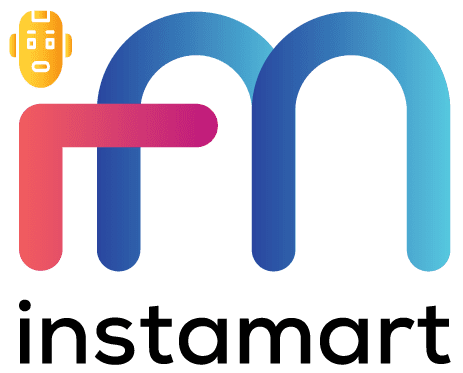ChatGPT, powered by OpenAI’s GPT-3.5, is an impressive language model designed to engage in interactive conversations with users. To use ChatGPT:
- Find a chat interface,
- Type your message
- Send your message,
- Receive response,
- Continue the conversation,
- Be specific, but do not stop there …
Also, experiment and iterate, and refrain from unethical conversations. Leveraging deep learning techniques and a vast corpus of data, it can simulate human-like responses and provide valuable information on a wide range of topics. In this guide, we will explore how to make the most out of ChatGPT, including tips for optimal usage, understanding its capabilities, and ensuring responsible interactions.
Getting Started
To use ChatGPT effectively, first, find a platform or application that integrates the model. You can access ChatGPT from the instaMart.ai page for free to start your journey in using the AI tool. Many websites and chat interfaces offer access to AI language model. Once you’ve landed on a chat window, simply type your message in the input box and hit “Send” to initiate the conversation.
Natural Language Interactions
The system is designed to comprehend natural language, so feel free to communicate just like you would with another person. Ask questions, seek advice, or request explanations on various subjects.
Specifying Your Requests
To receive more accurate responses, be specific in your queries. Instead of asking, “Tell me about cats,” try, “What are the common health issues that affect domestic cats?” Specificity helps AI language model understand your intent better.
Iteration and Experimentation
If ChatGPT’s response doesn’t precisely meet your expectations, don’t be discouraged. Iteration is the key to fine-tuning your questions and getting the desired output. Try rephrasing or asking follow-up questions to help clarify your request.
Leveraging Context
The Artificial Intelligence language model maintains context during conversations, so refer back to previous responses when asking follow-up questions. By referencing earlier replies, you can create more coherent and engaging exchanges.
Unbiased and Ethical Use
Remember that ChatGPT reflects the data it has been trained on. Be cautious when seeking sensitive or controversial information. Avoid engaging in harmful or unethical behavior, as the model’s primary purpose is to assist and provide valuable insights.
Limitations and Challenges
While ChatGPT is an impressive AI language model, it has limitations. It may sometimes generate inaccurate or nonsensical responses. The model does not possess real-world knowledge and cannot replace human judgment, so exercise critical thinking when evaluating its answers.
Educational and Professional Assistance
Artificial Intelligence can be a valuable tool for learning and research. Students can seek explanations, historical context, or creative writing ideas. Professionals can leverage it for brainstorming, drafting content, or even generating code snippets.
Language Translation
ChatGPT can assist in translating text between languages. Simply request translations like, “Translate ‘Hello, how are you?’ into French.”
ChatGPT in Coding and Programming Help
If you’re stuck with coding problems, ChatGPT can be of great assistance. Ask for coding solutions or help with algorithms by specifying your programming language.
Creative Writing and Storytelling
For creative writers, ChatGPT can be a source of inspiration. You can ask it to generate plot ideas, character names, or even compose short pieces of writing.
Proofreading and Editing
Unlike other chatbots, it can help you proofread and edit your written content. Seek assistance in identifying grammatical errors, typos, or improve sentence structure. In this case, you add text and ask ChatGPT to edit.
Can We Use ChatGPT for Free?
Yes. You can use it for free. However, to get the best experience you can resort to paid access.
Free Access: OpenAI provides free access to ChatGPT on their website. Users can access the platform and have limited interactions with the language model without charge. However, there may be some restrictions on usage, such as the number of tokens you can use per query and the response time.
Paid Access: The company also offers a subscription plan called “ChatGPT Plus,” which provides additional benefits over the free version. ChatGPT Plus is a paid subscription service that offers general access to Artificial Intelligence language without the same token limits as the free version. Subscribers to ChatGPT Plus have faster response times and can use the language model more extensively
How do you ask the AI language model to improve writing?
When asking ChatGPT to improve its writing, you can use the following strategies to provide specific instructions:
Request Clarification: If the response is unclear or lacks coherence, ask AI language model to clarify its statement or rephrase it. For example, you can say, “Can you clarify what you mean?” or “Please rephrase the last sentence for better clarity.”
Ask for More Detail: If you feel that the response is too brief or lacks depth, ask the chatbot to provide more details. You can say, “Can you elaborate further on this topic?” or “I would like to know more about…”
Specify Writing Style: If you have a particular writing style in mind, communicate it to the AI language model tool. For instance, you can request a formal tone, casual language, or a specific voice that aligns with your preferences or requirements.
Point Out Errors: If you come across grammatical errors, inaccuracies, or factual mistakes, inform the AI chatbot about them. Saying “There is a typo in your response” or “You made a factual error, please correct it” can be helpful.
Ask for Examples: If you need examples to support the content, ask ChatGPT to provide relevant illustrations or instances. For example, “Can you give me an example of this in action?”
Seek Alternative Phrasings: If you find repetitive language or want to explore different ways of expressing a point, ask ChatGPT to rephrase sentences or use synonyms. For instance, “Can you find another way to say…” or “Please vary your word choice.”
Set a Word Limit: If you want more concise responses, specify a word limit. For instance, you can say, “Please keep your response within 100 words.”
Provide Context: Sometimes, giving additional context or background information can help ChatGPT generate more relevant and accurate responses. Offer relevant details to guide its writing.
Ask for a Conclusion: If the response seems incomplete, you can request the chatbot to provide a conclusion or summarize the main points. For example, “Can you summarize your response in a few sentences?”
Experiment and Iterate: Don’t hesitate to experiment with different phrasings or ask follow-up questions to refine the output. Iteration can help ChatGPT understand your preferences better and improve its writing accordingly.
Does ChatGPT Give Correct Answers?
The Artificial Intelligence language model strives to generate responses that are contextually appropriate and plausible based on the data it has been trained on. However, it’s important to understand that ChatGPT is an AI language model, and its responses are generated based on patterns in the data it has seen during training. While it can provide helpful and accurate information in many cases, it may not always give correct answers, especially in situations where the correct answer is not present in its training data or where it encounters ambiguous queries.
The accuracy of answers can depend on several factors, including the quality and diversity of the data it was trained on, the complexity of the question asked, and the context provided. It’s also essential to keep in mind that the tool doesn’t possess real-world knowledge and cannot understand concepts beyond its training data.
As a user, it’s important to verify the information provided by chatbot, especially if it involves critical decisions, important facts, or sensitive topics. Relying solely on AI-generated responses without cross-referencing with other sources or human expertise can lead to misinformation or incorrect conclusions.
While AI language models like ChatGPT have shown remarkable capabilities, they are not infallible, and their responses should be taken as one of many sources of information rather than definitive answers. Critical thinking and human judgment are still crucial when evaluating the accuracy and reliability of any information, whether it comes from AI or human sources
In sum…
ChatGPT is a remarkable tool, capable of facilitating interactive conversations, providing information, and assisting users across various domains. By using it responsibly, understanding its capabilities and limitations, and iterating on your queries, you can harness the power of ChatGPT to enhance learning, creativity, and problem-solving. Embrace the potential of AI to augment human capabilities and engage in enriching interactions with this incredible language model.
Read more articles here






